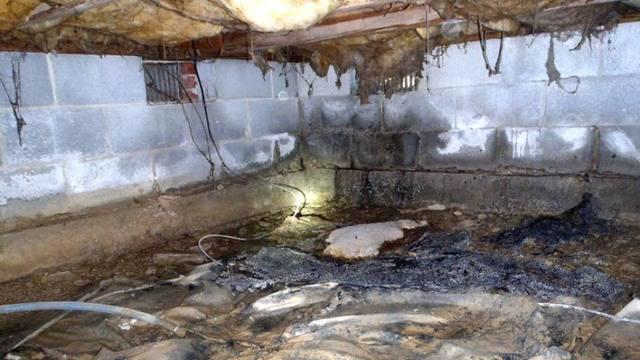Is Your Crawl Space Built to Today's Standards?

Imagine building a home today to the standards of the 1950s.
If you were to begin building a new home with outdated standards and attitudes, you wouldn't install insulation in your attic. Your windows would be single pane, perhaps with storm windows. Your bathroom most likely wouldn't be vented, and you wouldn't find a smoke alarm anywhere in your home.
If you didn't have a basement, your home would be built over a dirt crawl space that was rarely, if ever, inspected. Your 1950s-era attitude about your crawl space would be, "What you don't know won't hurt you."
Over the past six decades, science and researchers have taught us how to build homes that are comfortable, safe and energy efficient. Unfortunately for most homeowners their crawl spaces are built and maintained much more closely to the standards of the 1950s than to those of today.
An outdated approach to crawl spaces
Those 1950s-era standards promote the growth of mold because they allow significant amounts of moisture into the crawl space. Foundation vents allow outside air to enter the crawl space this brings in a fresh supply of moisture which makes the floors above very cold in the winter and the home extremely drafty.
Although the homeowner or builder may have installed a thin layer of plastic on the ground in the crawl space, that plastic still allow moisture from the ground to penetrate the crawl space. This welcomes insects in the moist environment under the home, making their way into the living space above.
Over time, a moisture problem will cause wood supporting the home to rot, including floor joists. Any floor insulation will also soak up the moisture, causing it to fall from between the floor joists, leaving floors very cold.
A new way of thinking about your crawl space
Science has actually shown us how to build crawl spaces that makes homes cleaner, more comfortable, healthier, and much more energy efficient. Research has taught us that most homes should have crawl spaces that are encapsulated, not covered with a thin layer of plastic. The encapsulation seals the crawl space with a thicker plastic liner that effectively blocks moisture form the dirt below and doesn't develop holes under normal wear and tear.
The seams are taped to prevent moisture infiltration. Foundation walls are insulated, keeping conditioned air from escaping the crawl space and hot summer air or cold winter air from getting inside that crawl space. The thick plastic liner encapsulating the crawl space continues up the foundation walls which effectively seals out the moisture from the dirt below and from the foundation walls.
A healthy crawl space makes for a healthy home
By building and maintaining crawl spaces in this up-to-date manner, homeowners will find that the air is cleaner in their homes, their floors and homes feel warmer, the wood supporting their homes will last longer, and they will save up to 25 percent on their heating and cooling bills. You'll also find that the mold growth in their crawl spaces isn't being promoted, because the principal sources of moisture - air coming in form the foundation vents and moisture coming up form the ground - have been eliminated.
The science of crawl spaces is an issue that hasn't yet received a lot of attention nationwide, but it really should. This is an important issue because it impacts millions of homeowners across America.
As you can see, when it comes to crawl spaces, what you don't know can hurt you, your family, your comfort, the longevity of your home and even your pocketbook.
Complete Home Solutions can help you. Give us a call today at 1-410-867-1202 to schedule a FREE estimate of your home. Bring your crawl space to today's standards!

